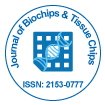Review Article
Dissection the Osteogenic and Angiogenic Signal Pathways in Bone Development and Regeneration with Biochips
| Jeremy M, Schon LC and Zhang Z* | |
| Orthobiologic Laboratory, MedStar Union Memorial Hospital, Baltimore, MD, USA | |
| Corresponding Author : | Zijun Zhang Orthobiologic Laboratory Medstar Union Memorial Hospital 201 E. University Parkway, Bauernschmidt Building Room 763, Baltimore, MD 21218, USA Tel: 410-554-2830 Fax: 410-554-2289 E-mail: zijun.zhang@medstar.net |
| Received March 17, 2014; Accepted March 29, 2014; Published April 03, 2014 | |
| Citation: Jeremy M, Schon LC, Zhang Z (2014) Dissection the Osteogenic and Angiogenic Signal Pathways in Bone Development and Regeneration with Biochips. J Biochips Tiss Chips 4:109. doi:10.4172/2153-0777.1000109 | |
| Copyright: © 2014 Jeremy M, et al. This is an open-access article distributed under the terms of the Creative Commons Attribution License, which permits unrestricted use, distribution, and reproduction in any medium, provided the original author and are credited. | |
Abstract
Osteogenesis is the cellular and molecular foundation of skeletal development and bone regeneration related
to fracture healing, revitalization of bone graft and therapies for osteoporosis. A hallmark of osteogenesis is the
mineralization of extracellular matrix. Because of its potential impact on developmental biology and human health,
understanding and regulation of osteogenesis are subjects of intensive study. Although significant advancements
have been made over the past decades, there are still unsolved puzzles in regulations of osteogenesis. Angiogenesis
generally refers to new blood vessels branching out from established vasculature. Besides of fundamental physiology,
angiogenesis involves in pathology, such as growth of cancer, and is essential for the repair of virtually all types of
tissues. It has long been recognized that osteogenesis and angiogenesis are coupling events during bone formation.
The classic osteogenic and angiogenic pathways intertwine and cross-talk during bone formation. To better understand
the signal pathways and coupling factors of osteogenesis and angiogenesis is critically important for enhancing bone
regeneration and tissue engineering of bone. The conventional biological models, however, have very limited capacity
of isolating angiogenic and osteogenic events from the cascade of bone regeneration, and precisely quantifying the
effects of angiogenic and osteogenic factors on bone formation at a molecular level. Biochips and tissue chips provide
a powerful tool to simulate and quantify angiogenic and osteogenic events on the chips and effectively untangle these
biologically important and clinically relevant molecular events during bone formation.

 Spanish
Spanish  Chinese
Chinese  Russian
Russian  German
German  French
French  Japanese
Japanese  Portuguese
Portuguese  Hindi
Hindi